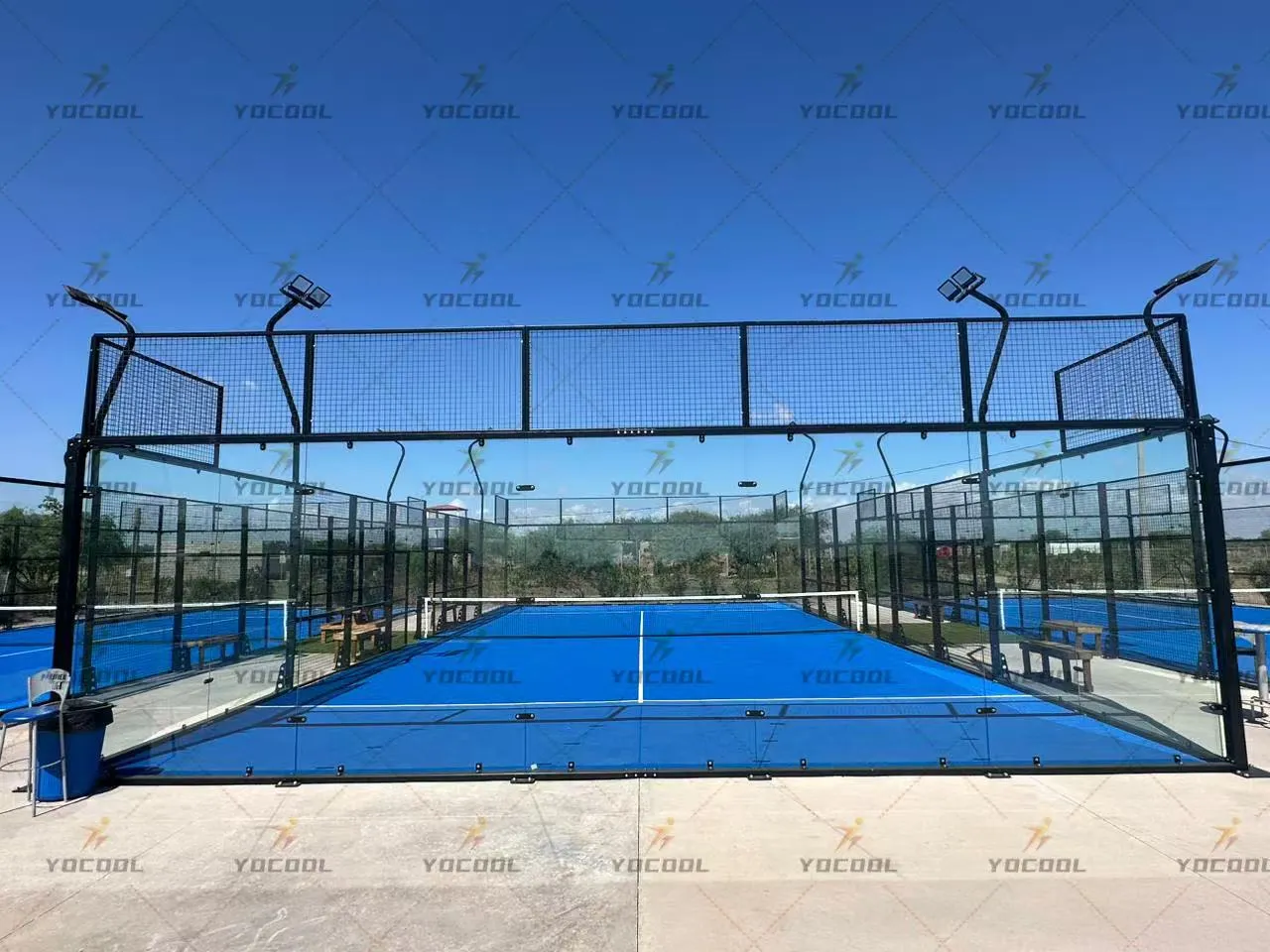

Paderball, as an emerging sport, has rapidly developed globally in recent years, and its unique game rules and social attributes have made it deeply loved by the public. As the core carrier of Padel ball sports, the design and construction of Padel Court has also become a highly anticipated topic. A standard Padel Court is not just a simple sports venue, but also a new type of sports and social space, which is of great significance for promoting Padel ball sports and improving the quality of urban life.

The glass wall endows Paddle Court with its unique tactical and ornamental features, allowing players to use the wall to bounce back and increase the variation of the ball path and the fun of the game. The metal mesh ensures the enclosure of the court, preventing the ball from flying out of the field, and also serves as a part of the game, allowing players to use the mesh to hit the ball. This design, which combines openness and closure, endows Paddle ball sports with a unique charm.
The common materials used in the panoramic padel court venue include artificial turf and hard ground. Artificial turf can provide good cushioning, reduce athletes' sports injuries, and its maintenance cost is relatively low. Hard court can provide faster ball speed and higher rebound, suitable for more aggressive playing styles. Choosing the appropriate venue material requires comprehensive consideration of factors such as the positioning, frequency of use, and target audience of the stadium.
Excellent paddle tennis court design should focus on landscape creation, creating a comfortable sports atmosphere through greening, lighting, and other means. At the same time, the stadium can also be equipped with supporting facilities such as rest areas, changing rooms, shower rooms, etc., providing players with comprehensive services. A well-designed Padel Court can enhance users' sports experience and attract more people to participate in this sport.
Paderball is an easy to learn and social sport that is suitable for people of all ages and levels to participate in. Therefore, building padel tennis court in public places such as communities and parks can promote communication and interaction among community residents, and enhance community cohesion. At the same time, Padel Court can also serve as a commercial venue, providing services such as course training and ball equipment sales, driving the development of related industries.
In summary, Padel Court is not just a sports venue, but also a comprehensive space that integrates sports, socializing, and entertainment. With the increasing popularity of Padel ball sports, the construction of Padel Court will also usher in broader development prospects. By continuously optimizing design and improving quality, Padel Court will provide people with a better sports experience and add more vitality to urban life.
Size: Padel Court is 20 meters long and 10 meters wide (smaller than a tennis court), surrounded by glass walls and metal mesh fences.
Ground: usually artificial turf or sand, with a rougher surface to slow down the speed of the ball.
Rule: The ball can bounce back against the wall and be hit (similar to squash), doubles is more common, and low-pressure tennis balls (with less elasticity) are used.
The glass/metal fence is a part of the game, and the ball can still continue to hit back after bouncing off the fence (it needs to land once first).
The height of the fence is usually 34 meters, which helps keep the ball on the field and increases tactical diversity (such as rebounding angle balls).
To serve, you need to start the serve (below your waist). The ball must first land once in our own half and then be sent diagonally to the opponent's serving area.
If the ball lands in the correct area after hitting the net, it needs to be resent; If the serve hits the fence directly, it will result in a misjudgment.
Artificial turf+quartz sand: the most common, providing good grip and cushioning.
Cement or acrylic coating: lower cost, but faster ball speed.
Professional matches often use a combination of grass and sand to balance ball speed and player movement.
Suitable for: small court, slow ball speed, easy to pick up; The doubles mode has strong socialization and requires lower physical fitness than tennis.
Reason for popularity:
Simple rules and strong interest;
Flexible venue construction (indoor/outdoor);
After becoming popular in Spain, Latin America and other places, it has been promoted globally.
The Rising Padel Tennis Pickleball: A New Social Sports Venue
The Exercise Benefits of Padel Glass for Endurance and Coordination
Padel Tennis Ppickleball: Differences and Development Prospects of Emerging Ball Sports
Padel Court in its infancy: a new type of sports and social space
Padel Court Glass: Technology, Performance, and Impact
Paddle Tennis and Pickleball: a thriving sport